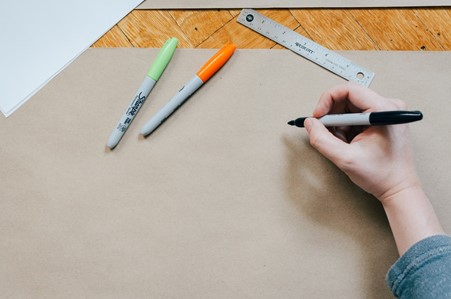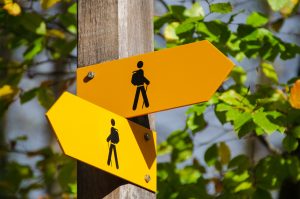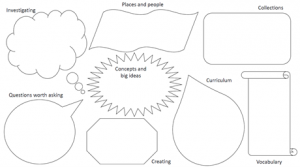
February 17, 2021, by Rupert Knight
Planning for possibilities
In this post, Catherine Gripton considers planning and how ‘planning for possibilities’ might support beginning and early career teachers to plan more holistically for learning.
Learning to plan
One of the first challenges for beginning teachers on an initial teacher education course is learning to plan. Many beginning and early career teachers will be grappling with this right now. Supporting a less-experienced teacher to learn to plan is not straightforward for experienced teachers for whom this has become almost second nature in their own practice. Mentors of beginning teachers are highly skilled at slowing down their thinking to explain the steps in the planning process. As Rachel Walker, an experienced mentor in one of our partnership schools, explains in her recent blog post, it takes time to support new teachers navigating professional skills such as planning. Despite this invaluable support, it takes hours to plan even a short lesson to begin with. This is particularly the case for beginning teachers, thinking through every part of the lesson including how to gain the children’s attention and how to give out resources. These are the practical considerations that experienced teachers are able to determine in the moment.
Planning as preparation for learning
New teachers can become very focussed on planning records and forms. They need reminding regularly that planning is about thinking. Planning is preparation for learning. For an individual lesson, this involves all of the thinking that has gone into that lesson including, but not exclusively, the lesson plan which has scaffolded and prompted this thinking. But it is even broader than this. As preparation for learning, planning includes all of the teaching choices that support learning. These therefore include the planning of the physical, emotional and social learning environment. For learning to take place, children need nurturing, respectful and trusting relationships with teachers, for example. Therefore, teachers plan (prepare for learning) by deciding how they will establish these relationships. A few years ago, I worked with a beginning teacher who produced very detailed lesson plans, trying to pre-empt every possibility within the lesson but still the lessons would get derailed when two children demanded her attention and the rest of the class would get bored of waiting for her. The mentor very skilfully set the beginning teacher a target to spend time playing football with the two children as they recognised that planning to build relationships was ultimately planning for learning. This was ultimately successful.
The challenge of planning
In preparing for learning, a novice teacher might initially plan in such detail that they stick rigidly to it even when something happens in the lesson that they have not anticipated and they really should deviate from the plan. This raises the question: how can a teacher plan for the unexpected or unknown? Trying to control the lesson to such an extent that there are no opportunities for the unexpected is surely not the answer, although it is easy to see that this is tempting. For assessment, engagement and ultimately learning, we need the children to contribute, make choices and share their thinking with teachers and with each other. It is these less predictable elements which help teachers tailor their teaching to the children and help children to take responsibility for their learning. I suggest that beginning and early career teachers be encouraged to plan for possibilities.

Planning for possibilities – the solution?
Planning for possibilities is an approach to planning that embraces preparation for learning; that which we can predict and that which we can’t. It means creating a learning environment where children make choices, follow their own ideas and explore tasks which can move forwards in multiple ways. Examples include investigations in science, creative writing and ‘low threshold, high ceiling’ activities in mathematics. This can seem daunting for a beginning or early career teacher but ultimately more reassuring to expect to make choices and follow different paths in their teaching, being responsive to the children. When they have planned for possibilities, they can research subject knowledge, prepare resources and design activities in advance. They can make changes during the lesson to improve learning. On a simple level, beginning teachers can add ‘ifs’ into their written plans where they use an assessment opportunity to determine which of two or more activities they will do next. Alternatively, they might put some activities in their written plan in italics or a different colour to identify those that could be missed out if time is short or their assessments suggest they could move forwards more swiftly.
On a more involved level, beginning teachers can mind map all of the possibilities for learning around a theme or topic focus that they are beginning to plan. This type of possibility thinking is quite freeing as they are not committed to any specific ideas and are not constrained by practicalities. I have worked with beginning teachers who have generated ideas such as a class trip to the moon or a visit to the Houses of Parliament. Whilst they could not use these exact ideas in their practice, the process of generating these ideas prompted them to plan drama sessions or class debates to replicate these experiences.
A blank piece of paper or some simple prompts (an example is provided) can support the planning for possibilities process.

The intention is that, through using such an approach, the beginning teacher will think of more meaningful, investigative and practical learning experiences in their classrooms. Many of their possibilities will not make it into their lessons but some will and more importantly if they need to change their plans, take on a bit of extra teaching or a child asks a question they were not expecting, then they are better prepared for this. Through planning for possibilities, they will have thought of more planning ideas than they will ever need so they can select the best ideas, collect additional resources and have activity ideas ready as back-up plans. They can be more fully prepared for learning.
As explored in this 2019 blog post by Rupert Knight, expert teachers are typified by having well-developed ‘teacher-thinking’ and decision-making skills. Experienced teachers can support beginning and early career teachers to develop in this regard by supporting them to plan for possibilities. They might:
• Involve beginning teachers in planning the physical and emotional learning environment (including making reasoned choices about furniture arrangements, class rules/responsibilities and opportunities for social learning). Encourage early career teachers to reflect on these aspects of their practice regularly, highlighting the importance of these aspects for learning.
• Encouraging them (or collaborating with them) to plan for possibilities and produce a mind map (perhaps using the prompts in the image) for a new theme or topic before planning specific learning activities so they can prepare for learning in a more holistic way.
• In feedback on planning, identify places where there will be several possible directions that the lesson might follow (‘ifs’) and explain what you would be looking for from the children to inform teaching choices at these points.
• Model making teaching decisions in the moment (explaining to the children where you are adapting your plans) and encourage them to do the same.
• When observing them teach, map the lesson as a flow diagram of teaching possibilities and choices to highlight lesson structure and teacher thinking.
• Encourage them to involve children in planning, asking children to engage in possibility thinking about what they might learn about (perhaps at the beginning of a new topic or sequence of lessons).
No comments yet, fill out a comment to be the first

Leave a Reply